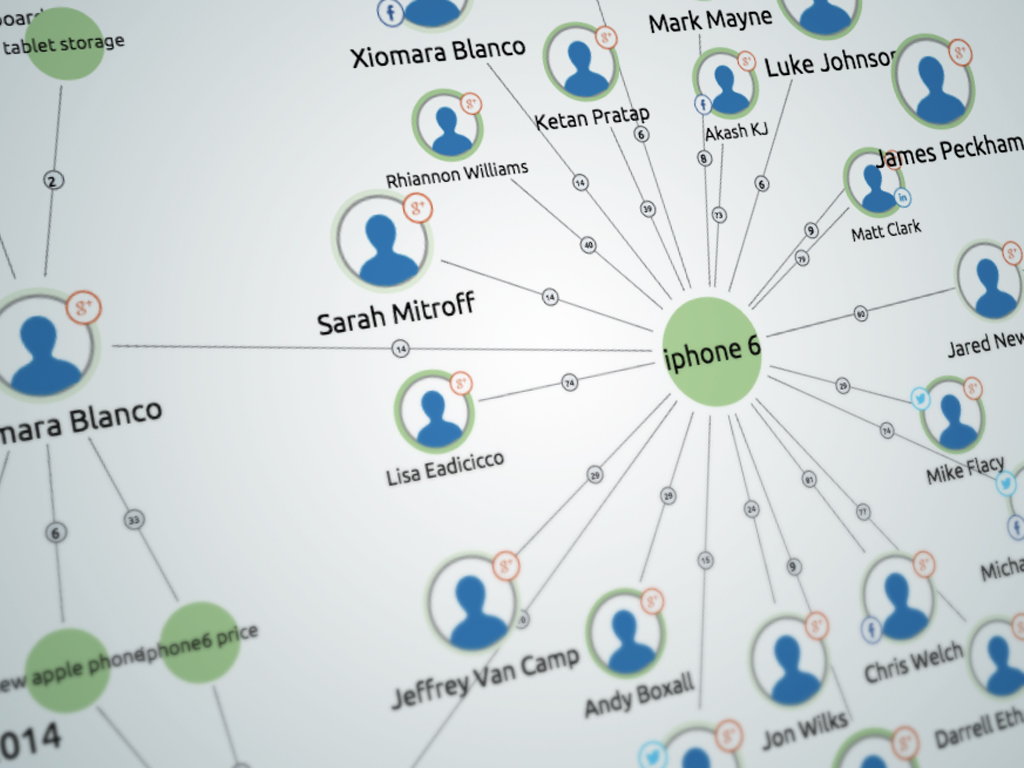While Meryl Streep and Robert Redford may epitomize celebrity to consumers of certain generations, this notion is wildly outdated to Millennials and Generation Z. The celebrity spokesperson of yore is already being supplanted by digital personalities in many campaigns in part to provide what consumers perceive as more authentic content. But what else do marketers need to know about influence as it stands today and where it is headed?
In perhaps one of the more profound sound bites from Social Media Week, Matt Britton, CEO of creative and technology agency MRY, said during one panel, “Being an influencer is more lucrative than a doctor or a lawyer these days. The opportunities are endless.”
And he has a point. But in addition to being potentially profitable for influencers themselves, brands and marketers can also reap plenty of rewards if they know how to tap the right personalities.
Here are 10 remarkable influencer marketing facts that you need to know about working with digital personalities going forward.
Fact #1: The Idea Of Celebrity Is Changing
The idea of what defines fame is shifting from the A‑list Brads and Angelinas of traditional Hollywood to digital figures, says Pauline Malcolm, vice president of agency strategy and development at short-form video firm Maker Studios, pointing to a Variety survey that found six of Millennials’ top celebrities were YouTube stars.
In fact, the most influential figures listed by teens include: comedy duo Smosh, online producers The Fine Bros. and Swedish video game player and YouTube personality PewDiePie, the survey said.
More traditional Hollywood celebrities like actress Jennifer Lawrence and singer Katy Perry came in at numbers 7 and 9, respectively.
“It’s completely different than what you’d think of five years ago,” Malcolm said.
Fact #2: PewDiePie Is Leading The Way
PewDiePie is “the most influential person right now in digital media,” Malcolm said.
With 35 million YouTube subscribers, “he really understands his audience,” Malcolm added. “He creates a video and it has millions of views in five minutes.”
In fact, according to a 2014 Forbes story, he brings in $4 million in ad sales per year.
Fact #3: Influencers Are Powerful In Part Because Consumers Are Narcissistic
Younger consumers want not only authentic content, but content in which they see a reflection of themselves.
“The audience wants to see themselves and are gravitating [to influencers] because they are like themselves,” Malcolm said. “Think about this generation. Everyone wants their 5 to 10 seconds of fame. Those influencers are really connecting and they see themselves and it gives this [sense that] every man can be a maker or a celebrity.”
Fact #4: Like Traditional Fame, Luck Is A Big Part Of The Influence Equation
As entertaining as Smosh and PewDiePie may be, it isn’t always about just talent.
“I don’t think there’s a [formula to becoming an influencer],” said Harry Bernstein, creative director of digital agency The 88. “They’re just making content and engaging with a platform and it’s kind of dumb luck. It’s like there’s a million people who can sing and one Madonna.”
In addition, Bernstein said that platforms are free, open, and engaged. The moment of recognition sometimes sort of just happens for a lucky few.
“For some people it happens and for some it doesn’t. It perpetuates itself,” he said. “And the growth that happens after access is supported by the media in some way, like when Vogue lists its top bloggers. When that happens, it grows.”
Joey Kotkins, CMO at social marketing platform Inside Social, agrees it’s a combination of luck and talent and focus that makes influencers influential.
“If they can seize the moment and their audience realizes they can continue on a growth path with them and their content and personality is showing through, they can continue to grow and exciting things will follow,” Kotkins said.
Fact #5: True Influencers Drive Action
No matter what platform they are on, influencers are able to drive action (i.e., sales) with their posts.
“Brands want to grow their followings, so those [influencers] we want to work with are [the ones] who have true influence…to really drive action in someone else,” Bernstein says. “That driving action is the difference between popularity and actually having influence.”
Fact #6: Influence Can Change Overnight
In the fickle digital world, a single post can change everything for both an influencer and a brand.
“More than anything, social has enabled the democratization of influence,” Kotkins said. “Anyone who has no influence today can have a ton tomorrow for any number of reasons. And if a brand can identify that future influence and talk [to the influencer] sooner than anyone else, they can magnify the power of that influence in a meaningful way.”
Fact #7: Some Platforms Create Their Own Influencers
Bernstein points to platforms like Pinterest and Instagram, which suggest users and are “building their own kind of influencers.”
That’s because these platforms are in essence revealing who they think are most important and/or relatable to given users.
Fact #8: Influencers Are Cheaper, And More Targeted, Than Celebrities
Marketers that opt to work with influencers can drill down to find digital figures with expertise within a specific world, which, ideally, ties back to the product and/or brand in question like never before.
“Ultimately what these people have is a hybrid of influence and distribution, which was something not possible with traditional talent,” said Benjamin Davis, agent at talent agency William Morris Endeavor. “They’re also in a very specific niche. That’s what’s appealing.”
Fact #9: Influencers Must Remain True To Themselves To Retain Influence
The digital world has infinite niches, which means, in theory, there’s an influencer out there somewhere whose voice fits each brand need.
“But it’s important for brands to engage someone who can actually be themselves,” Davis said. “And that’s on the brand’s side to ascertain.”
Fact #10: Some Brands Are Influencers
In other words, certain iconic brands have their own digital clout on par with digital personalities.
“Chanel has the most hashtags of any brand on Instagram and didn’t have Instagram,” Bernstein says. “It’s bigger than social. There will always be brands that represent certain things.”
Although, per Instagram, Chanel debuted an Instagram channel in November.
Did you find any of these influencer marketing facts surprising?


